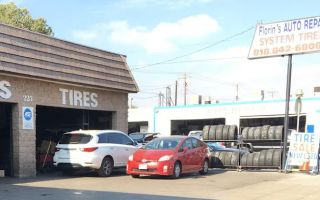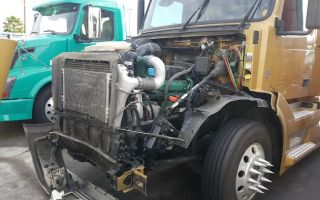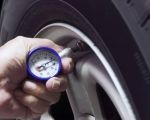Having a flat tire can happen to anyone, at any time. Whether you’re on a road trip or simply driving to work, a flat tire can cause a lot of stress. However, it’s important to stay calm and know the right steps to take. In this guide, we will explore the different ways you can handle a flat tire situation, providing tips on how to change your tire, how to prevent flats, and when it’s time to call for professional help.

MR. TIRE INC.
2078 New York Ave, Huntington Station, NY 11746, USA
1. What to Do When You Get a Flat Tire
Getting a flat tire is one of the most common car problems drivers face, but it doesn’t have to be a nightmare if you know how to handle the situation. The first step when you notice your tire is flat is to ensure your safety. Here’s what you need to do:
- Pull Over Safely: If you’re driving when you notice the flat tire, the first thing you need to do is pull over to a safe area. Make sure you are away from traffic, preferably on a flat, stable surface.
- Turn on Your Hazard Lights: Turning on your hazard lights will alert other drivers that you have a problem and that they should slow down and avoid your vehicle.
- Assess the Situation: Take a moment to evaluate the damage. Check if the tire is completely flat or if it’s a slow leak. If you’re not sure, it’s best to err on the side of caution and prepare to change the tire.
2. How to Change a Flat Tire
Knowing how to change a flat tire is an essential skill for any driver. It’s not difficult, but it requires a few specific steps and tools. Here’s a step-by-step guide:
- Gather Your Tools: You will need a few basic tools to change your tire: a spare tire, a jack, a lug wrench, and a tire iron (if your car doesn’t have a spare, you will need to call for help).
- Lift the Vehicle: Position the jack under the car’s frame (consult your vehicle's manual for the exact location) and lift the vehicle off the ground until the flat tire is no longer touching the road.
- Loosen the Lug Nuts: Use the lug wrench to loosen the lug nuts on the flat tire. Turn counterclockwise to loosen them. You may need to use some force if they are tight. Don’t remove them completely just yet; you’ll do that after the tire is raised.
- Remove the Flat Tire: Once the lug nuts are loosened, remove them completely. Then, pull the flat tire off the wheel hub.
- Install the Spare Tire: Align the spare tire with the wheel hub and slide it into place. Tighten the lug nuts by hand to secure the tire, but don’t fully tighten them just yet.
- Lower the Vehicle: Carefully lower the car back to the ground using the jack, ensuring the spare tire is securely in place.
- Tighten the Lug Nuts: Once the car is back on the ground, use the lug wrench to tighten the lug nuts in a crisscross pattern. This ensures the tire is secured evenly.
- Check the Tire Pressure: After changing the tire, check the tire pressure to make sure the spare is properly inflated. It’s a good idea to visit a gas station shortly after to top off the air if needed.
3. Common Causes of Flat Tires
Understanding why flat tires happen can help you prevent them in the future. While some flat tires are unavoidable, many occur due to common causes:
- Potholes and Road Debris: Hitting a pothole or running over sharp objects like nails, screws, or glass can cause a puncture in your tire, leading to a flat.
- Underinflated Tires: Tires that are not properly inflated are more likely to develop flats. Be sure to check the tire pressure regularly and keep your tires inflated to the manufacturer’s recommended level.
- Worn-out Tires: Old tires that have worn down tread are more vulnerable to punctures. If your tires are more than six years old, it might be time to replace them.
- Extreme Weather: Very hot or cold temperatures can affect tire pressure and the integrity of your tires. Always check tire pressure in extreme weather conditions to avoid any issues.
4. How to Prevent Flat Tires
While it’s impossible to avoid every potential hazard on the road, there are steps you can take to minimize the risk of a flat tire:
- Regular Tire Inspections: Check your tires regularly for signs of wear or damage. Look for cuts, bulges, or objects lodged in the tread that could lead to a flat.
- Maintain Proper Tire Pressure: Ensure your tires are inflated to the correct pressure. Use a tire pressure gauge to check regularly, especially before long trips.
- Rotate Tires: Rotate your tires regularly (every 6,000 to 8,000 miles) to ensure even wear and extend their lifespan.
- Drive Carefully: Avoid driving over road hazards like debris, potholes, and sharp objects. Drive cautiously, especially in inclement weather, to protect your tires from damage.
5. When to Call for Professional Help
While changing a flat tire is a useful skill, there are situations where calling for help is the best option. Here are a few scenarios in which you should contact a professional towing or roadside assistance service:
- No Spare Tire: If you don’t have a spare tire or it’s too damaged to be used, calling for roadside assistance is your best option.
- Flat Tire in an Inaccessible Area: If you’re stuck in a remote or dangerous area, it’s safer to wait for professional help rather than risk injury or further damage to your vehicle.
- Inexperienced with Tire Change: If you’re unsure about how to change the tire or lack the proper tools, calling a professional can save you time and stress.
6. Real-Life Example: A Flat Tire During a Family Road Trip
Imagine you’re on a road trip with your family, traveling through the countryside. You’re miles away from the nearest service station, and suddenly you hear a thud. Pulling over, you realize that you have a flat tire. This scenario is all too common, but it’s how you react that makes a difference.
In this situation, having the proper tools and knowledge to change the tire can get you back on the road quickly. However, if you’re unfamiliar with the process or the tire change doesn’t go smoothly, calling a trusted towing service like Rescue & Towing can be a lifesaver. They’ll come to your location and either help you change the tire or tow your car to the nearest service station, so you can continue your trip without further delay.

MR. TIRE INC.
2078 New York Ave, Huntington Station, NY 11746, USA
7. Conclusion: Stay Prepared for Flat Tires
Flat tires are an unfortunate but common occurrence for drivers, but knowing how to handle them can make a big difference in your experience. By following the steps outlined above and maintaining your tires properly, you can reduce the likelihood of a flat tire. And if you ever find yourself in a situation where you can’t change the tire yourself, don’t hesitate to reach out to a professional towing service for assistance. Companies like Rescue & Towing can provide the help you need to get back on the road safely and quickly.
If you’re in need of reliable towing or roadside assistance, be sure to check out Rescue & Towing for recommendations on the best services in your area.




























